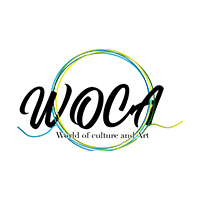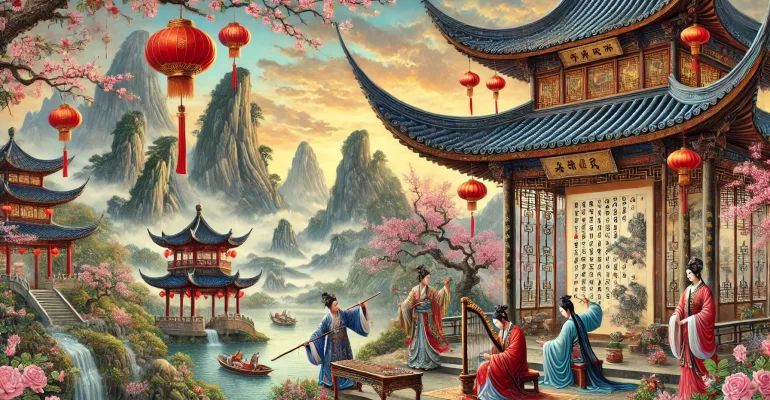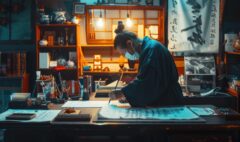The Enduring Legacy of Chinese Traditional Arts
The Enduring Legacy of Chinese Traditional Arts
Chinese traditional arts, with their rich history and profound cultural significance, stand as a testament to the enduring legacy of one of the world’s oldest civilizations. From the delicate brushstrokes of calligraphy to the intricate designs of porcelain, these art forms reflect the values, beliefs, and aesthetics that have shaped China’s cultural identity over thousands of years. Chinese traditional arts are not just expressions of creativity; they are deeply embedded in the spiritual and philosophical fabric of the nation, influencing every aspect of life from daily rituals to imperial ceremonies.

These art forms have evolved through the ages, often reflecting the socio-political changes, religious beliefs, and philosophical thoughts of different eras. Each piece of traditional Chinese art, whether it’s a painting, a sculpture, or a musical composition, carries with it a story—one that tells of the harmony between nature and humanity, the reverence for ancestors, and the pursuit of balance and beauty in all things. As we delve deeper into the world of Chinese traditional arts, we uncover not only the technical mastery of these creations but also the profound cultural heritage they represent, offering a window into the soul of China.
A Glimpse into History: The Evolution of Chinese Arts
The evolution of Chinese traditional arts is a journey that spans millennia, with each dynasty contributing unique elements that have shaped these art forms into what they are today. During the Han dynasty (206 BCE–220 CE), one of the earliest and most influential periods in Chinese history, we see the emergence of many foundational art forms. Han dynasty art is characterized by its emphasis on funerary art, including intricate jade burial suits and elaborate tomb decorations. This period also saw the development of Chinese calligraphy, which would later become one of the most revered art forms in the country.
The Tang dynasty (618–907 CE), often regarded as a golden age of Chinese culture, brought a flourishing of the arts, particularly in painting and poetry. Tang artists mastered the use of ink and brush to create delicate landscapes, portraits, and scenes of everyday life, often imbued with spiritual and philosophical themes. This era also saw the rise of Buddhist art, with stunning sculptures and murals adorning the walls of temples and caves across China.

The Song dynasty (960–1279 CE) further refined these art forms, particularly in painting and ceramics. Song painters are renowned for their landscape paintings, which often depicted towering mountains and flowing rivers, symbolizing the majesty and tranquility of nature. This period also saw the perfection of porcelain-making techniques, leading to the creation of the exquisite celadon wares that were highly prized both in China and abroad.
Finally, the Ming dynasty (1368–1644 CE) brought a new level of sophistication to Chinese art. Ming artisans are particularly famous for their blue and white porcelain, which became highly sought after around the world. The Ming period also saw the flourishing of traditional Chinese theater and opera, blending music, drama, and visual arts into a rich cultural experience.
Throughout these dynasties, Chinese traditional arts have continually evolved, absorbing new influences while preserving their core essence. Each era has left its mark, contributing to the rich tapestry of artistic heritage that continues to inspire and captivate people around the world today.
The Grace of Chinese Calligraphy
Chinese calligraphy is more than just a form of writing; it is a revered art form that has been a cornerstone of Chinese culture for thousands of years. The beauty of calligraphy lies in its ability to convey both meaning and emotion through the elegant strokes of the brush. Each character is carefully crafted, with the flow of the brush capturing the artist’s inner thoughts and feelings.
There are several styles of Chinese calligraphy, each with its own unique characteristics. Seal script (Zhuanshu) is one of the oldest forms, known for its intricate and symmetrical characters. Clerical script (Lishu) followed, with a more straightforward and flowing style, making it easier to read. Regular script (Kaishu) is perhaps the most widely recognized, characterized by its clear and structured form, while Cursive script (Caoshu) is more expressive and fluid, often used to capture spontaneous emotions.

Calligraphy holds deep cultural significance in China, often seen as a reflection of a person’s character and intellect. It is closely tied to Chinese philosophy, particularly Confucianism and Taoism, which emphasize balance, harmony, and the importance of self-cultivation. In Chinese literature, calligraphy is often used to write poetry, with the visual beauty of the script enhancing the emotional impact of the words. This combination of literary and artistic expression makes calligraphy a unique and highly respected art form.
The Art of Chinese Painting: Brushstrokes of Nature and Spirit
Chinese painting, like calligraphy, is deeply rooted in the cultural and spiritual traditions of China. One of the most famous styles is ink wash painting (Shui-mo), which uses black ink, sometimes with touches of color, to create delicate and expressive images. The simplicity of the materials—just ink, brush, and paper or silk—belies the complexity and depth of the art form.

Common motifs in Chinese painting include landscapes, birds, flowers, and animals, each carrying its own symbolic meaning. For example, the plum blossom often represents resilience and renewal, while bamboo symbolizes strength and flexibility. These natural elements are not just depicted for their beauty but are infused with spiritual meaning, reflecting the harmony between humanity and nature that is central to Chinese thought.
Chinese painters often strive to capture the essence or spirit of a subject, rather than simply creating a realistic representation. This approach reflects the influence of Taoism, which emphasizes the connection between all living things and the flow of life energy (Qi). The brushstrokes are meant to convey the artist’s inner spirit, making each painting a deeply personal expression.
The Intricacy of Chinese Ceramics
Chinese ceramics are renowned worldwide for their beauty, craftsmanship, and historical significance. The art of ceramics in China has evolved over thousands of years, with each dynasty contributing to the development of new techniques and styles. Among the most famous types of Chinese ceramics are porcelain and celadon.
Porcelain, known as “china” in the West, is highly prized for its delicate and translucent quality. The production of porcelain reached its peak during the Ming dynasty, particularly with the creation of blue and white porcelain, which became highly sought after both in China and internationally.

Celadon, with its distinctive greenish glaze, was perfected during the Song dynasty and is celebrated for its smooth, jade-like surface. The subtle beauty of celadon lies in its understated elegance, reflecting the Confucian ideal of simplicity and restraint.
Chinese ceramics have not only been appreciated for their aesthetic qualities but have also had a significant influence on global art. The techniques and styles developed in China have inspired potters and artisans around the world, making Chinese ceramics a key element in the history of global art and culture.
Together, calligraphy, painting, and ceramics represent the rich artistic heritage of China, each reflecting the deep connection between art, culture, and philosophy in Chinese society.
Chinese Music and Instruments: The Harmony of Tradition
Chinese traditional music is a rich and soulful expression of the country’s deep cultural heritage. Central to this music are several key instruments, each with its own unique sound and cultural significance. The Guqin, for instance, is an ancient seven-stringed zither that has been played for over 3,000 years. It’s often associated with scholars and sages, as its gentle, meditative tones are believed to reflect the harmony between nature and humanity. The Guqin is more than just an instrument; it’s a tool for self-cultivation and spiritual exploration.

Another essential instrument is the Erhu, a two-stringed fiddle with a hauntingly beautiful sound. The Erhu is often called the “Chinese violin,” but its sound is distinctly different—mournful, yet expressive, capable of conveying deep emotion. The Pipa, a four-stringed lute, is another iconic instrument, known for its versatility and the skill required to play it. The Pipa’s rapid plucking technique creates a dynamic and lively performance, often used to depict historical stories and scenes from nature.
These instruments are not just for entertainment; they play a vital role in Chinese cultural and ceremonial practices. Whether in a solo performance or as part of a larger ensemble, traditional Chinese music is deeply connected to the country’s history, values, and philosophy.
The Symbolism of Chinese Jade Art
In Chinese culture, jade is more than just a beautiful stone; it is a symbol of purity, virtue, and immortality. For thousands of years, jade has been revered as a sacred material, often associated with the highest moral qualities. The Chinese saying “gold has a value; jade is invaluable” reflects the deep cultural significance of this stone.
The process of jade carving is a meticulous and highly skilled craft. Artisans spend years mastering the techniques required to shape this hard stone into intricate objects, from delicate jewelry to elaborate sculptures. Each piece of jade is believed to carry its own spirit, and the carver’s role is to reveal this inner essence.

Jade is often used in rituals and as protective talismans, symbolizing longevity and power. In ancient China, jade burial suits were made for emperors to ensure their immortality. The stone’s smooth, cool texture and its subtle, glowing colors are seen as embodiments of the Confucian virtues of wisdom, justice, and compassion.
The Cultural Significance of Chinese Opera
Chinese opera is a vibrant art form that combines music, drama, dance, and elaborate costumes into a single, powerful performance. One of the most famous styles is Peking opera, known for its stylized movements, vivid face painting, and high-pitched vocals. Chinese opera is not just about telling a story; it’s about conveying the emotions and moral lessons behind the story.
Each element of the performance is symbolic. The colors of the face paint, for example, represent different character traits—red for loyalty, white for treachery, and black for integrity. The exaggerated movements and gestures are carefully choreographed to express the inner thoughts and feelings of the characters.

Chinese opera has been an essential part of Chinese culture for centuries, often performed during festivals and special occasions. It reflects the values, history, and traditions of the people, serving as both entertainment and moral education.
Chinese traditional arts, whether in the form of music, jade carving, or opera, continue to play a vital role in preserving and conveying the country’s rich cultural heritage. These art forms are not just relics of the past; they are living traditions that continue to inspire and influence modern culture and art around the world. As we appreciate and preserve these traditions, we keep alive the wisdom, beauty, and spirit of one of the world’s oldest civilizations, ensuring that future generations can continue to draw from this well of inspiration.











